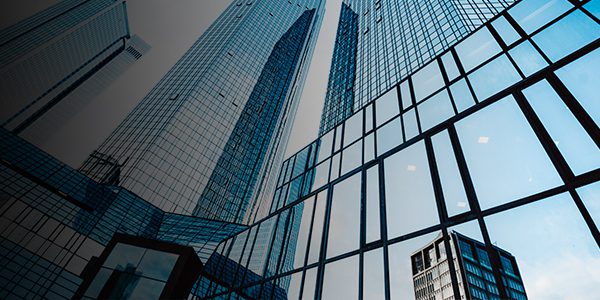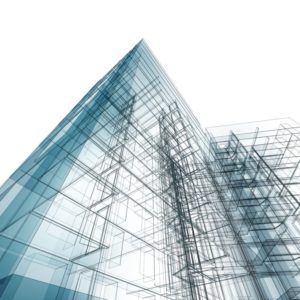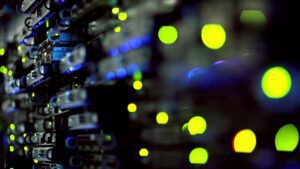Yes, we’re still in the middle of a deadly global pandemic, but there’s now hope and a growing light at the end of what has been a long and dark tunnel. That hope rests on vaccines which are rapidly being produced and distributed around the globe. As vaccinations ramp up, we can finally begin to think about a return to normalcy and a return to work and play for millions of people. COVID-19 put the transmission of viruses and the spread of infectious diseases at the forefront of concerns for building owners, building managers, and their tenants. But even once the pandemic recedes, maintaining healthy buildings by identifying and reducing occupant health risks should remain a critical and necessary function of building operations teams.

Particularly because of the pandemic, occupants expect buildings to be safe and that appropriate measures are being taken to minimize the risk of disease transmission. Tenants increasingly understand the impact their workplace has on their well-being, and so they’re going to expect a safe and healthy environment[1]. Some organizations are even facing lawsuits from tenants and employees who believe they contracted a disease as the result of landlord or employer negligence[2]. Working to keep occupants healthy will help maintain business productivity. In fact, one recent study calculated the U.S. employer cost of the 2018 flu season, alone, to be between $15.4 and $20.9 billion[3]. And so, there’s clear competitive, legal and economic incentives for owners to do what they can to mitigate disease transmission risks in their buildings.
Schneider Electric White Paper 506, “Reducing Infectious Disease Risks with Smart Building Technologies and Management Systems” presents an infectious disease risk management program (see Figure 1 below) made up of 2 parts: the facility operations program and the building’s technology system.

Both parts are essential. However, there is already a lot of published material and content on the facility operations portion. We’re talking about site policies, procedures, cleaning and communications programs, etc. Authorities such as the World Health Organization (WHO), Center for Disease Control (CDC), the European Centre for Disease Prevention and Control, and ASHRAE have all published guidelines for employers to follow. Therefore, in the paper, we focus on the technology portion of the program. Building controls integrated with smart building technology and applications can be enabled to help simplify, improve, and automate safety and infection risk management. These technologies can play a central role in identifying threats, reducing risks of infectious disease transmission, and monitoring for policy compliance.
Identifying threats
There are fundamentally three kinds of infectious disease-related “threats” that building management systems and smart building technology can detect and respond to:
- infected people
- environmental conditions that increase risk of disease transmission
- occupant distribution patterns violating guidelines or policies
The first step in identifying threats is to measure people’s core body temperature upon or just before entering the building. The paper talks about newer infrared thermometer systems that have come out on to the market that can accurately record temps without needing an operator to be present. And these systems can integrate with access control and building management systems to help ensure sick people do not infect other occupants. As an example of the technology, we feature a new infrared temp scanner system from World Wide Technology that includes an Intel Micro PC inside the base of the unit and we present a few integration use cases on how this could work to keep occupants safer.
Building environmental sensors can monitor for conditions that might facilitate the growth of fungi, bacteria or viruses that cause infectious disease. Air temperature and humidity, air flow, fresh outside air, as well as water temperature and flow all affect the risk of disease transmission in buildings. ASHRAE and the Federation of European Heating, Ventilation, and Air Conditioning Associates (REHVA) both provide guidance on recommended environmental conditions that inhibit the growth and spread of these pathogens. Indoor Air Quality (IAQ) sensors widely available in the market today are a key technology for ensuring those conditions are maintained throughout the building. These are small devices that might be wireless (battery-powered) or hardwired (low voltage). Typical items measured by an IAQ sensor include:
- Temperature
- Relative humidity
- Carbon dioxide (CO2)
- Volatile Organic Compounds (VOCs)
- Particulate matter
- Air pressure
- Light levels (Lux)
- Radon gas
People flow counters, area counters, and occupancy sensors can be used to detect a different type of threat: occupancy patterns that are in violation of site guidelines or policies. During a pandemic, to create a healthy building operators need to limit the number of people on site and maintain proper spacing between occupants. Of course, regardless of whether there is a pandemic or not, fire codes and safety standards limit the number of people allowed in a given space. Building managers should, therefore, continuously monitor and be aware of the number of people in the building at a given point in time. Smart building tech makes this much easier to do vs. using manual log-in sheets and having security personnel keep track. People flow counters, area counters, and occupancy sensors are three smart building technologies used to track and manage this. During a pandemic, they can be used to ensure occupants are adhering to social distancing requirements or staying away from areas that haven’t been sanitized after use or are at risk of having been contaminated with a virus or bacteria. Concerns over right to privacy, however, might preclude the use of such tactics in certain situations and/or places.
Risk mitigation & monitoring for compliance
Its pretty straight forward to think of using building sensors to monitor for infectious disease threats. But a BMS that is well-integrated with other smart building technologies can enable you to prevent, mitigate, or contain threats as they develop. They do this either by controlling the systems they operate to prevent conditions that result in a risk (e.g., HVAC controls manage temperature, humidity, and fresh air exchanges) or they initiate actions to eliminate a threat once one is identified by the sensors (e.g., access control system locking entry doors and closing air duct dampers upon a positive test). Building controls can respond to these risks and threats in an automated fashion. The BMS can also document issues to provide a basis for corrective actions to be taken. In the case of policy and regulatory compliance, as well as in the event of any legal challenges, the BMS data can serve as the “source of truth”. Its integrations with things like access controls, room booking systems, cleaning management tools, CCTV analytics, and other workplace apps that enable coordinated, automated actions to document and respond to infectious disease threats.
Not only does the BMS play a key role in identifying and mitigating risks, but it also plays a role in monitoring for compliance to infectious disease control policies and procedures. It provides a means for benchmarking performance over time. An effective way to benchmark and continuously monitor a building’s readiness for occupants to return amidst a pandemic is to participate in the Arc Re-entry program which is explained in the paper. It’s basically a scoring program that provides the tools needed to: (1) document and benchmark infection control policies and procedures, (2) collect and analyze related occupant experiences, and (3) measure and track indoor air quality. The first two are done through surveys while the third relies on IAQ sensors and integration with the BMS or directly to the Arc platform.
Building sensors and management systems can also be used to monitor for compliance to established disease prevention-related policies aimed at occupants. Some examples might include enforcing or tracking social distancing, detecting whether people are wearing masks, using workforce apps to communicate policies and guidance on related topics to keep the site safe and healthy. To read more about how building management systems and associated smart building tech can reduce the risk of infectious disease transmission, please see our white paper.
[1] https://www.linkedin.com/pulse/what-kind-tenant-experience-do-todays-tenants-want-gabrielle-mcmillan/
[2] https://www.advisory.com/daily-briefing/2020/08/03/covid-lawsuits
[3] https://www.challengergray.com/press/press-releases/update-2-flu-season-cost-employers-21b



